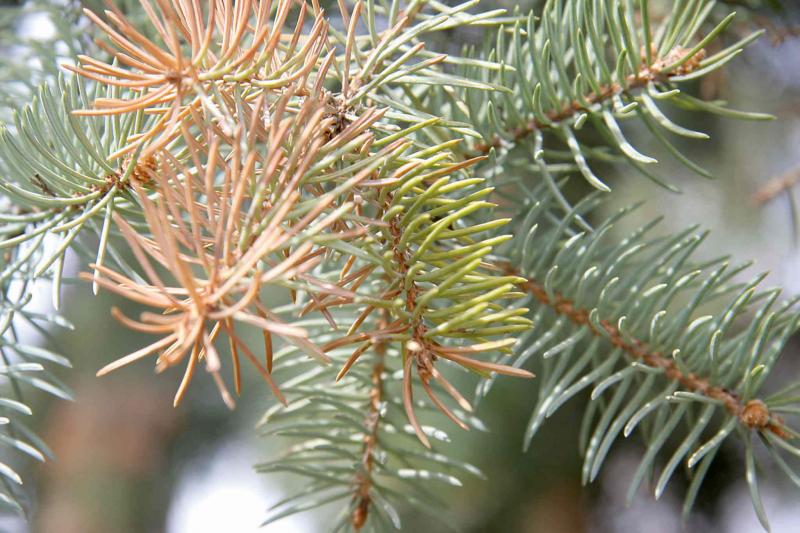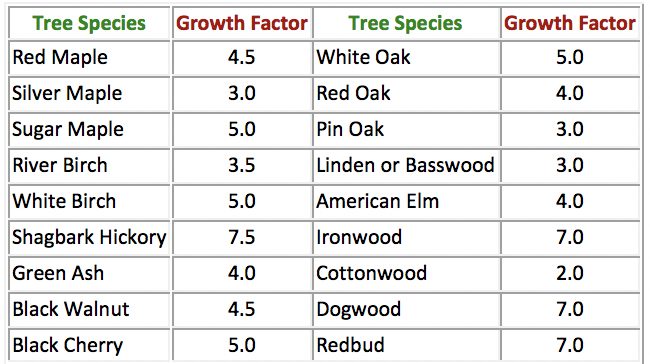The Ideal Conditions for Spruce Tree Growth
Spruce trees are known for their rapid growth, but they require specific conditions to thrive. To answer the question of how fast does spruce trees grow, it’s essential to understand the ideal climate, soil, and sunlight conditions that support their development. Spruce trees typically grow best in cool, moist climates with average temperatures ranging from 35°F to 55°F (2°C to 13°C). They also require well-drained, nutrient-rich soil with a pH between 6.0 and 7.0. Adequate moisture is crucial, with an annual rainfall of at least 20 inches (500 mm) or regular irrigation. Full sun to partial shade is also necessary, with at least six hours of direct sunlight per day. By providing these ideal conditions, spruce trees can grow rapidly, with some varieties reaching heights of up to 3 feet (90 cm) per year. In fact, spruce trees growing in optimal conditions can increase their height by up to 10% annually, making them one of the fastest-growing tree species. Understanding these ideal conditions is crucial for anyone looking to grow spruce trees quickly and healthily.
How to Choose the Right Spruce Tree Variety for Fast Growth
With over 35 species of spruce trees, selecting the right variety for fast growth can be a daunting task. However, understanding the characteristics of different spruce tree species can help you make an informed decision. White spruce, for instance, is known for its rapid growth rate, reaching heights of up to 2 feet (60 cm) per year. Black spruce, on the other hand, is a slower-growing species, but it’s more tolerant of wet soils and cold temperatures. Colorado blue spruce is another popular variety, prized for its vibrant blue foliage and moderate growth rate. When choosing a spruce tree variety, consider factors such as climate, soil type, and available space. If you’re looking to grow spruce trees quickly, opt for a variety that’s well-suited to your region’s conditions. For example, if you live in a region with cold winters and short growing seasons, a black spruce or white spruce may be a better choice. By selecting the right spruce tree variety, you can optimize its growth rate and enjoy a thriving, healthy tree. Remember, how fast does spruce trees grow also depends on the specific variety you choose, so make an informed decision to reap the benefits of rapid growth.
The Role of Watering and Fertilization in Spruce Tree Growth
Proper watering and fertilization are crucial for promoting healthy growth in spruce trees. Adequate moisture is essential, especially during the first year after planting. Water spruce trees regularly, but avoid overwatering, which can lead to root rot and other problems. Fertilization is also vital, as it provides essential nutrients for growth. Use a balanced fertilizer with a ratio of 10-10-10 (nitrogen-phosphorus-potassium) and apply it according to the manufacturer’s instructions. Mulching and composting can also help retain moisture, suppress weeds, and regulate soil temperature. Mulch around the base of the tree, keeping it a few inches away from the trunk, and add a 2-3 inch layer of compost to the soil. By providing optimal watering and fertilization conditions, spruce trees can grow rapidly, with some varieties reaching heights of up to 3 feet (90 cm) per year. Remember, how fast does spruce trees grow also depends on the quality of care, so prioritize proper watering and fertilization techniques to support healthy growth.
Pruning and Shaping: Techniques for Encouraging Rapid Growth
Pruning and shaping are essential techniques for promoting healthy growth and encouraging rapid development in spruce trees. Pruning helps to remove dead, diseased, or damaged branches, which can impede growth and create an entry point for pests and diseases. It also allows for better air circulation, reducing the risk of fungal diseases that thrive in humid environments. Shaping, on the other hand, involves pruning and training the tree to maintain a desired shape or form. This can help to improve the tree’s overall structure, increase its aesthetic appeal, and even enhance its growth rate. When pruning and shaping spruce trees, it’s essential to use clean, sharp tools and to make cuts just outside the branch collar, taking care not to damage the tree’s bark. By pruning and shaping spruce trees regularly, you can promote healthy growth, increase their growth rate, and enjoy a thriving, well-shaped tree. Remember, how fast does spruce trees grow also depends on the quality of care, so prioritize proper pruning and shaping techniques to support rapid and healthy development.
Common Pests and Diseases Affecting Spruce Tree Growth
Spruce trees can be susceptible to various pests and diseases that can hinder their growth and development. Some common pests that can affect spruce trees include spider mites, aphids, and bagworms. These pests can cause damage to the tree’s needles, stems, and roots, leading to reduced growth rates and increased susceptibility to disease. To prevent pest infestations, it’s essential to maintain good tree health through proper watering, fertilization, and pruning. Regularly inspecting the tree for signs of pest activity and taking prompt action to control infestations can also help to minimize damage. In addition to pests, spruce trees can also be affected by various diseases, such as root rot, canker, and needle cast. These diseases can be caused by fungal, bacterial, or viral pathogens and can lead to significant damage and even tree death. To prevent disease, it’s crucial to provide optimal growing conditions, avoid overwatering, and maintain good tree hygiene. By being aware of these common pests and diseases and taking steps to prevent and control them, spruce tree growers can help to promote healthy growth and maximize their tree’s growth rate. Remember, how fast does spruce trees grow also depends on the tree’s ability to resist pests and diseases, so prioritize preventative measures to support rapid and healthy development.
How to Measure the Growth Rate of Your Spruce Tree
Measuring the growth rate of your spruce tree is essential to understanding how fast does spruce trees grow and to identify any potential issues that may be hindering its development. There are several methods to measure the growth rate of spruce trees, including tracking height, diameter, and volume increases over time. One way to measure height is to use a tape measure or ruler to record the distance from the ground to the top of the tree at regular intervals, such as annually. Diameter can be measured by wrapping a tape measure or flexible ruler around the trunk of the tree at breast height (1.3 meters above the ground). Volume can be estimated by measuring the diameter and height of the tree and using a formula to calculate the volume. Regular measurements can help identify patterns of growth and detect any potential issues, such as nutrient deficiencies or pest infestations, that may be affecting the tree’s growth rate. By monitoring the growth rate of your spruce tree, you can adjust your care techniques to optimize its growth and ensure it reaches its full potential. Remember, understanding how fast does spruce trees grow is crucial to providing the best possible care and maximizing their growth rate.
Factors Affecting Spruce Tree Growth Rate: Climate, Soil, and Genetics
When it comes to understanding how fast does spruce trees grow, it’s essential to consider the various factors that can impact their growth rate. Climate, soil quality, and genetic factors all play a significant role in determining the rate at which spruce trees grow. Climate, for instance, can affect the availability of water and nutrients, which are essential for healthy growth. Spruce trees growing in regions with mild winters and cool summers tend to grow faster than those in areas with harsher climates. Soil quality is also crucial, as it provides the necessary nutrients and water for growth. Well-draining, nutrient-rich soil can support rapid growth, while poor soil quality can hinder it. Genetic factors, such as the specific variety of spruce tree, can also impact growth rate. Some varieties, like the Colorado blue spruce, are bred for fast growth, while others, like the black spruce, may grow more slowly. By understanding the impact of these factors, spruce tree growers can take steps to optimize growing conditions and promote rapid, healthy growth. For example, selecting a variety well-suited to the local climate and soil conditions can help ensure optimal growth. Additionally, providing proper care, such as regular watering and fertilization, can help mitigate the effects of less-than-ideal growing conditions. By considering these factors, growers can help their spruce trees reach their full potential and answer the question of how fast does spruce trees grow.
Maximizing Spruce Tree Growth: Tips for Optimal Care
To maximize spruce tree growth and answer the question of how fast does spruce trees grow, it’s essential to provide optimal care. By understanding the ideal conditions for growth, selecting the right variety, and employing proper care techniques, growers can promote rapid and healthy development. Here are the key takeaways for maximizing spruce tree growth: provide adequate moisture and nutrient-rich soil, choose a variety well-suited to the local climate, and employ proper watering and fertilization techniques. Regular pruning and shaping can also encourage healthy growth and increase air circulation. Additionally, being aware of common pests and diseases and taking preventative measures can help mitigate potential issues. By considering the impact of climate, soil quality, and genetic factors on growth rate, growers can tailor their care techniques to meet the specific needs of their spruce trees. By following these tips, growers can help their spruce trees reach their full potential and enjoy the many benefits that these trees have to offer. Whether you’re a seasoned gardener or just starting out, with the right care and attention, you can enjoy the rapid growth and beauty of spruce trees. Remember, understanding how fast does spruce trees grow is crucial to providing the best possible care and maximizing their growth rate.



:max_bytes(150000):strip_icc()/white-spruce-branch-837600712-5313112828fd4f4aa49d5d8f2e05568c.jpg)

